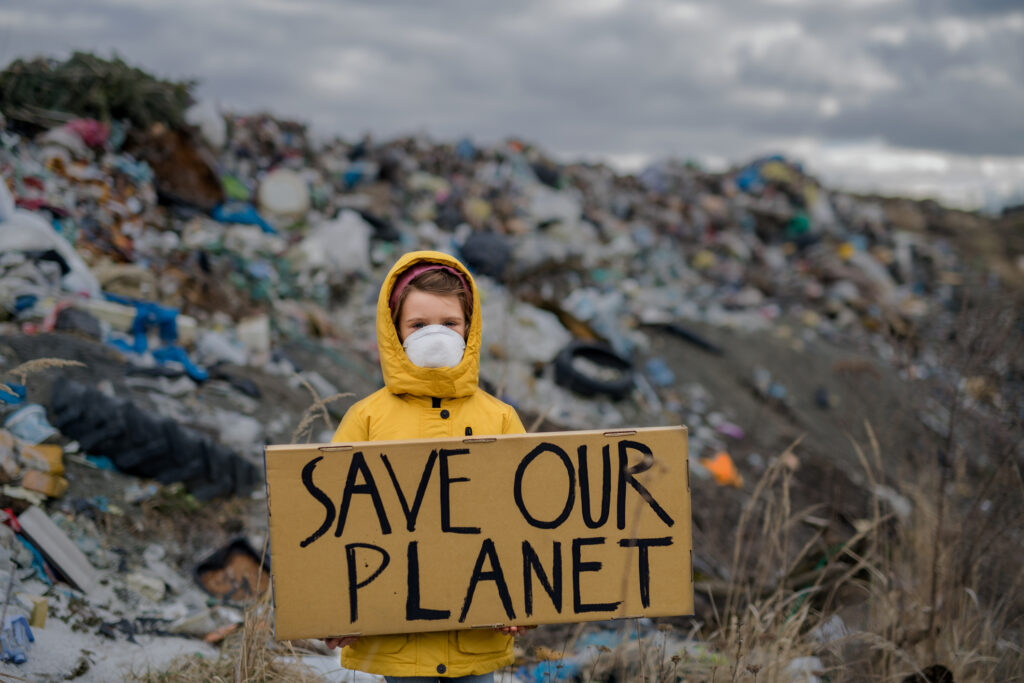It is difficult to deny that the climate crisis is here. Regardless of your location this past year, it is likely that you experienced extreme weather conditions like record breaking heat, flooding, and unseasonably intense forest fires. During the COP26 summit, we look upon our leaders to establish the right policies to mitigate this crisis. At the same time, we can act as individuals and as leaders in our organisations to reduce our environmental impact for a better future. The following is a list of various action items that a business of any type and size can implement to reduce their impact.
For the remote teams…
Send one less “thank you” email
A single email has the carbon footprint of four grams of CO2 eq. It’s not much, but if everyone sends one less email, it can really add up. A study showed that if everyone in the UK sent one less email a day, it would equate to saving 16,000 tonnes of CO2 a year. This is the same impact as taking 3,000 cars off the road!
Turn off your video in meetings (if you can)
Just one hour of videoconferencing has the carbon footprint of one kg of CO2 and requires up to 10 litres of water. By turning off your video, you can reduce your impact by 95%!
Home composting
Did you know that food waste releases a potent greenhouse gas (methane) as it breaks down? If food waste was a country, it would be the third highest polluting country in the world! The solution? Reduce waste and then compost what is left. Composting reduces greenhouse gas emissions and helps to return precious nutrients back to the soil. Home composting is as easy as putting your food scraps and waste in a large bucket and setting it out on the pickup day. Research composting solutions near you. Depending on your region, you may be able to get weekly pickups at very affordable rates ($25/month).
If food waste was a country, it would be the third highest polluting country in the world!
For any business type…
Switch to renewable energy sources
Transition your business away from fossil fuels and towards clean energy by switching to renewable sources like wind and solar. The easiest way to make this transition is to work with renewable energy companies that will purchase clean energy on your behalf. What this means is that for every kilowatt-hour of energy your business uses from the grid, another kilowatt-hour is purchased from a wind or solar farm and placed onto the grid as clean energy. Some options are Inspire or Bullfrog Power.
Offset unavoidable emissions
Emissions from certain parts of the operations are unavoidable. An example is an airline company and their associated fuel burning activities. However, by purchasing carbon offsets, a business can pay another entity to remove a given quantity of greenhouse gas emissions from the atmosphere, thereby offsetting their emissions.
The most classic example of a carbon offset is tree planting projects. You can find some carbon offset purchasing ideas at Cool Effect, Patch, and Kotoo. To know how much carbon offsets need to be purchased, it is suggested to complete a greenhouse gas inventory or life cycle assessment. Read more about these below.
For large supply chains…
Conduct a greenhouse gas inventory
To achieve reduced emissions, it is important to establish a baseline of current emissions. We cannot improve what we don’t measure. This is why a greenhouse gas inventory is so crucial for businesses committed to achieving lowered emissions.
By taking inventory of the gases emitted across the entire supply chain, businesses can build an effective strategy to manage, set targets, and ultimately reduce their emissions. To conduct an inventory, look for sustainability consultants who are well versed with the GHG Protocol.
Set science-based targets
Once a business understands the overall emissions from their operations, it is time to set reduction targets. But how do we do this? This is where we need science-based targets. These targets are developed in line with the level of reductions required to keep global warming below 2 degrees increase. These targets are also customised based on the sector of the business to ensure feasibility.
To establish such targets, contact the Science-Based Targets Initiative.
We cannot improve what we don’t measure.
For all supply chain businesses…
Conduct a life cycle assessment
A life cycle assessment is a methodology for assessing environmental impacts associated with all the stages of the life cycle of a commercial product, process, or service. This is how we measure the carbon footprint of a product. This kind of study can be used to educate customers on the benefits of your products, show investors your real impact, or make third-party claims to your stakeholders. To conduct a life cycle assessment, get in touch with me at W2R Solutions.
Source secondary material
To reduce the burden of extracting new material from the earth, we can use secondary (or recycled) material in our supply chains. This sourcing requires the expertise of supply chain or lean professionals. Some sources of secondary material include the current supply chain of the business, the supply chain of other businesses, and by researching the commodities market for post-consumer recycled material.
For the manufacturing teams…
Waste audits
Your local waste management provider can identify opportunities for reducing your waste by conducting an audit. A waste audit can inform a business of the type and quantity of waste generated in a given time. This allows the business to make an informed decision about the type of recycling programs that need to be established and their estimated cost.
Prevent waste
This is applicable for food manufacturing facilities. By auditing production lines, waste streams can be identified and then reduced or prevented. This is the specialty of consulting firms such as Enviro-Stewards. In the process of preventing waste, thousands of dollars of goods and products can be reclaimed. Plus, waste is reduced – a true win-win.
As you can see, regardless of your business type and size, there are ways to reduce our environmental impact. For more assistance in your sustainability journey, visit W2R Solutions.
[cm_form form_id=’cm_65a14c3f5da64′]






